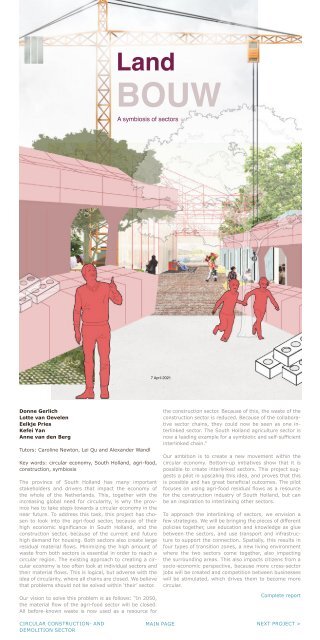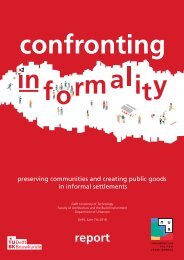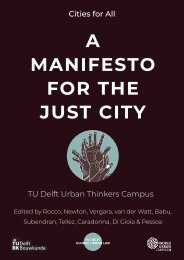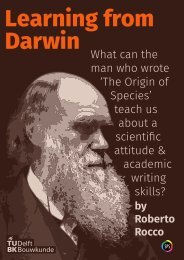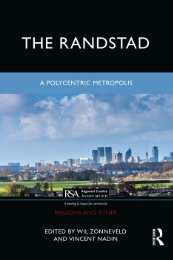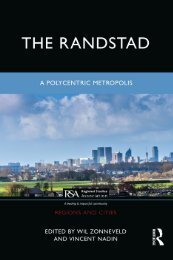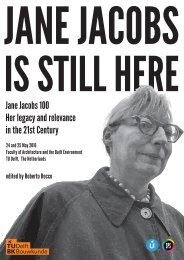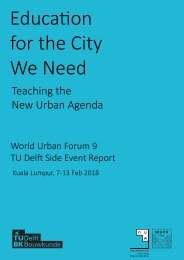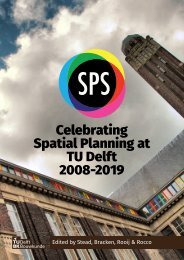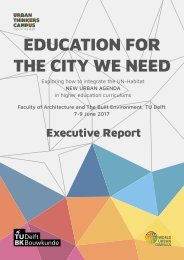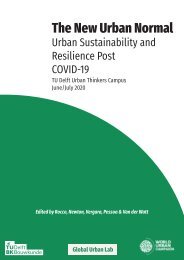Circular Southern Holland, an Online Exhibition
Online exhibition R&D studio Spatial Strategies for the Global Metropolis (AR2U086 & AR2U088), part of MSc Urbanism, Delft University of Technology, organised by Verena Balz and Qu Lei. We proudly present results of the Research & Design studio Spatial Strategies for the Global Metropolis, part of the MSc Architecture, Urbanism and Building Sciences/Track Urbanism programme at Delft University of Technology in an online exhibition. The thematic focus of the 2020-2021 round of the studio was informed by an ambitious policy agenda that the Province of South Holland has set out: aligned with objectives of the Dutch national government, it intends to host a 100% circular economy by 2050. 19 groups of students have analysed spatial and institutional development in Southern Holland and have designed visions and development strategies that lead towards a circular construction- and demolition sector, a circular agri-food sector, and a circular bio-based chemical sector in the region. In conjunction the projects presented in this exhibition explore the spatiality of a circular economy and seek to inspire spatial planning in this way. In the exhibition each student groups’ project is represented by an executive summary, which gives key information on the project and main recommendations on how to foster a circular economy in Southern Holland, and the title page of the group’s project report. Visitors who want to gain a deeper insight into projects can access the actual report in the TU Delft education repository.
Online exhibition R&D studio Spatial Strategies for the Global Metropolis (AR2U086 & AR2U088), part of MSc Urbanism, Delft University of Technology, organised by Verena Balz and Qu Lei.
We proudly present results of the Research & Design studio Spatial Strategies for the Global Metropolis, part of the MSc Architecture, Urbanism and Building Sciences/Track Urbanism programme at Delft University of Technology in an online exhibition.
The thematic focus of the 2020-2021 round of the studio was informed by an ambitious policy agenda that the Province of South Holland has set out: aligned with objectives of the Dutch national government, it intends to host a 100% circular economy by 2050. 19 groups of students have analysed spatial and institutional development in Southern Holland and have designed visions and development strategies that lead towards a circular construction- and demolition sector, a circular agri-food sector, and a circular bio-based chemical sector in the region. In conjunction the projects presented in this exhibition explore the spatiality of a circular economy and seek to inspire spatial planning in this way.
In the exhibition each student groups’ project is represented by an executive summary, which gives key information on the project and main recommendations on how to foster a circular economy in Southern Holland, and the title page of the group’s project report. Visitors who want to gain a deeper insight into projects can access the actual report in the TU Delft education repository.
Create successful ePaper yourself
Turn your PDF publications into a flip-book with our unique Google optimized e-Paper software.
L<strong>an</strong>d<br />
BOUW<br />
A symbiosis of sectors<br />
7 April 2021<br />
Donne Gerlich<br />
Lotte v<strong>an</strong> Oevelen<br />
Eelkje Pries<br />
Kefei Y<strong>an</strong><br />
Anne v<strong>an</strong> den Berg<br />
Tutors: Caroline Newton, Lei Qu <strong>an</strong>d Alex<strong>an</strong>der W<strong>an</strong>dl<br />
Key words: circular economy, South <strong>Holl<strong>an</strong>d</strong>, agri-food,<br />
construction, symbiosis<br />
The province of South <strong>Holl<strong>an</strong>d</strong> has m<strong>an</strong>y import<strong>an</strong>t<br />
stakeholders <strong>an</strong>d drivers that impact the economy of<br />
the whole of the Netherl<strong>an</strong>ds. This, together with the<br />
increasing global need for circularity, is why the province<br />
has to take steps towards a circular economy in the<br />
near future. To address this task, this project has chosen<br />
to look into the agri-food sector, because of their<br />
high economic signific<strong>an</strong>ce in South <strong>Holl<strong>an</strong>d</strong>, <strong>an</strong>d the<br />
construction sector, because of the current <strong>an</strong>d future<br />
high dem<strong>an</strong>d for housing. Both sectors also create large<br />
residual material flows. Minimizing the high amount of<br />
waste from both sectors is essential in order to reach a<br />
circular region. The existing approach to creating a circular<br />
economy is too often look at individual sectors <strong>an</strong>d<br />
their material flows. This is logical, but adverse with the<br />
idea of circularity, where all chains are closed. We believe<br />
that problems should not be solved within ‘their’ sector.<br />
Our vision to solve this problem is as follows: “In 2050,<br />
the material flow of the agri-food sector will be closed.<br />
All before-known waste is now used as a resource for<br />
the construction sector. Because of this, the waste of the<br />
construction sector is reduced. Because of the collaborative<br />
sector chains, they could now be seen as one interlinked<br />
sector. The South <strong>Holl<strong>an</strong>d</strong> agriculture sector is<br />
now a leading example for a symbiotic <strong>an</strong>d self-sufficient<br />
interlinked chain.”<br />
Our ambition is to create a new movement within the<br />
circular economy. Bottom-up initiatives show that it is<br />
possible to create interlinked sectors. This project suggests<br />
a pilot in upscaling this idea, <strong>an</strong>d proves that this<br />
is possible <strong>an</strong>d has great beneficial outcomes. The pilot<br />
focuses on using agri-food residual flows as a resource<br />
for the construction industry of South <strong>Holl<strong>an</strong>d</strong>, but c<strong>an</strong><br />
be <strong>an</strong> inspiration to interlinking other sectors.<br />
To approach the interlinking of sectors, we envision a<br />
few strategies. We will be bringing the pieces of different<br />
policies together, use education <strong>an</strong>d knowledge as glue<br />
between the sectors, <strong>an</strong>d use tr<strong>an</strong>sport <strong>an</strong>d infrastructure<br />
to support the connection. Spatially, this results in<br />
four types of tr<strong>an</strong>sition zones, a new living environment<br />
where the two sectors come together, also impacting<br />
the surrounding areas. This also impacts citizens from a<br />
socio-economic perspective, because more cross-sector<br />
jobs will be created <strong>an</strong>d competition between businesses<br />
will be stimulated, which drives them to become more<br />
circular.<br />
Complete report<br />
CIRCULAR CONSTRUCTION- AND<br />
DEMOLITION SECTOR<br />
MAIN PAGE


